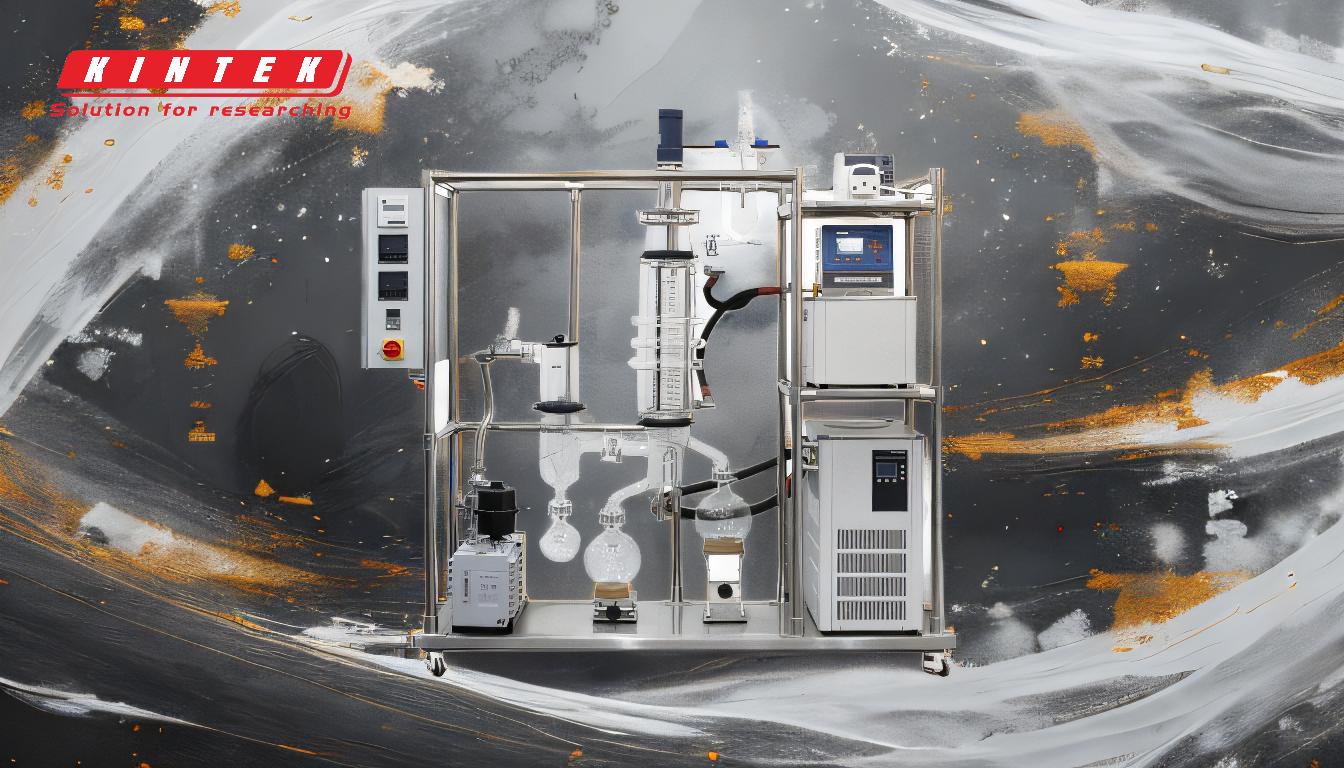Changing the pressure at which distillation is performed, particularly in a rotary evaporator (rotovap), offers several advantages, especially for heat-sensitive substances and optimizing the distillation process. By reducing the pressure, the boiling point of the substance is lowered, allowing distillation to occur at milder temperatures. This prevents thermal degradation of sensitive compounds and improves the overall efficiency of the process. Additionally, a well-controlled vacuum system can enhance separation efficiency, product quality, and throughput. However, the pressure must be carefully balanced with equipment limitations and process requirements to ensure optimal performance.
Key Points Explained:

-
Lower Boiling Points at Reduced Pressure:
- Explanation: Lowering the pressure in the distillation system reduces the boiling point of the substance being distilled. This is particularly beneficial for heat-sensitive compounds that may degrade at higher temperatures.
- Advantage: Allows distillation to occur at lower temperatures, preserving the integrity of the product and minimizing thermal decomposition.
-
Enhanced Distillation Efficiency:
- Explanation: A higher vacuum degree (lower pressure) increases the evaporation rate, enabling faster distillation. This is especially useful when processing large sample sizes or when time is a critical factor.
- Advantage: Improves throughput and allows more samples to be distilled in a given time frame, enhancing productivity.
-
Protection of Heat-Sensitive Substances:
- Explanation: Many compounds, such as pharmaceuticals, natural extracts, or volatile organic compounds, are sensitive to heat. Distilling at reduced pressure ensures these substances are not exposed to excessive temperatures.
- Advantage: Maintains the quality and stability of the final product, which is crucial for applications in chemistry, biology, and food science.
-
Energy Efficiency:
- Explanation: Lowering the boiling point reduces the amount of heat required to achieve distillation, which can lead to energy savings.
- Advantage: Reduces operational costs and environmental impact by minimizing energy consumption.
-
Improved Separation Efficiency:
- Explanation: A stable and well-controlled vacuum level ensures consistent separation of components during distillation. This is critical for achieving high-purity products.
- Advantage: Enhances the quality of the distilled product by ensuring precise separation of components.
-
Equipment Considerations:
- Explanation: The vacuum system, including the vacuum pump, sealing rings, and vacuum tubes, must be capable of maintaining the desired pressure. Materials like PTFE are preferred for their wear and corrosion resistance.
- Advantage: Ensures the system operates reliably and efficiently, minimizing downtime and maintenance costs.
-
Process Control:
- Explanation: Maintaining a steady feed rate, body temperature, and vacuum level is critical for consistent distillation performance.
- Advantage: Ensures repeatability and reliability in the distillation process, which is essential for industrial and laboratory applications.
-
Cooling System Optimization:
- Explanation: The cooling water temperature plays a significant role in distillation efficiency. Lower cooling water temperatures, combined with high vacuum levels, maximize the evaporation rate.
- Advantage: Enhances the overall efficiency of the distillation process, leading to faster and more effective separation.
-
Pressure Resistance and Safety:
- Explanation: The vacuum value must balance the equipment's pressure resistance capabilities with the desired distillation efficiency. Over-pressurizing or under-pressurizing the system can lead to equipment failure or suboptimal performance.
- Advantage: Ensures safe and efficient operation of the rotary evaporator, protecting both the equipment and the operator.
-
Versatility in Applications:
- Explanation: Adjusting the pressure allows the rotary evaporator to be used for a wide range of substances with varying boiling points and thermal sensitivities.
- Advantage: Makes the equipment versatile and adaptable to different experimental or industrial needs.
In summary, changing the pressure at which distillation is performed offers significant advantages, including lower boiling points, improved efficiency, protection of heat-sensitive substances, and enhanced process control. However, it is essential to balance these benefits with equipment capabilities and process requirements to achieve optimal results.
Summary Table:
| Advantage | Explanation | Benefit |
|---|---|---|
| Lower Boiling Points | Reduces boiling point, enabling distillation at lower temperatures. | Prevents thermal degradation of sensitive compounds. |
| Enhanced Distillation Efficiency | Higher vacuum increases evaporation rate for faster distillation. | Improves throughput and productivity. |
| Protection of Heat-Sensitive Compounds | Distills substances without exposing them to excessive heat. | Maintains product quality and stability. |
| Energy Efficiency | Reduces heat required for distillation, saving energy. | Lowers operational costs and environmental impact. |
| Improved Separation Efficiency | Ensures consistent separation of components. | Achieves high-purity products. |
| Equipment Considerations | Vacuum system materials like PTFE ensure reliability. | Minimizes downtime and maintenance costs. |
| Process Control | Steady feed rate, temperature, and vacuum level ensure consistent performance. | Enhances repeatability and reliability. |
| Cooling System Optimization | Lower cooling water temperatures maximize evaporation rate. | Improves overall distillation efficiency. |
| Pressure Resistance and Safety | Balances equipment capabilities with process needs. | Ensures safe and efficient operation. |
| Versatility in Applications | Adjustable pressure accommodates various substances and needs. | Makes the equipment adaptable for diverse applications. |
Optimize your distillation process with precise pressure control—contact our experts today!













